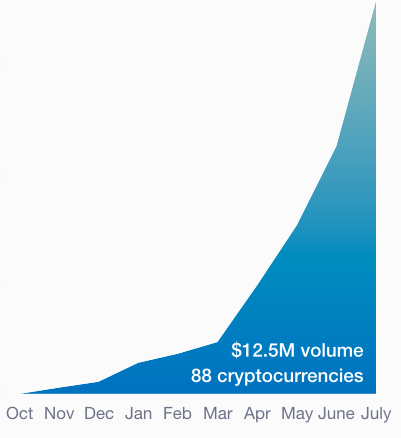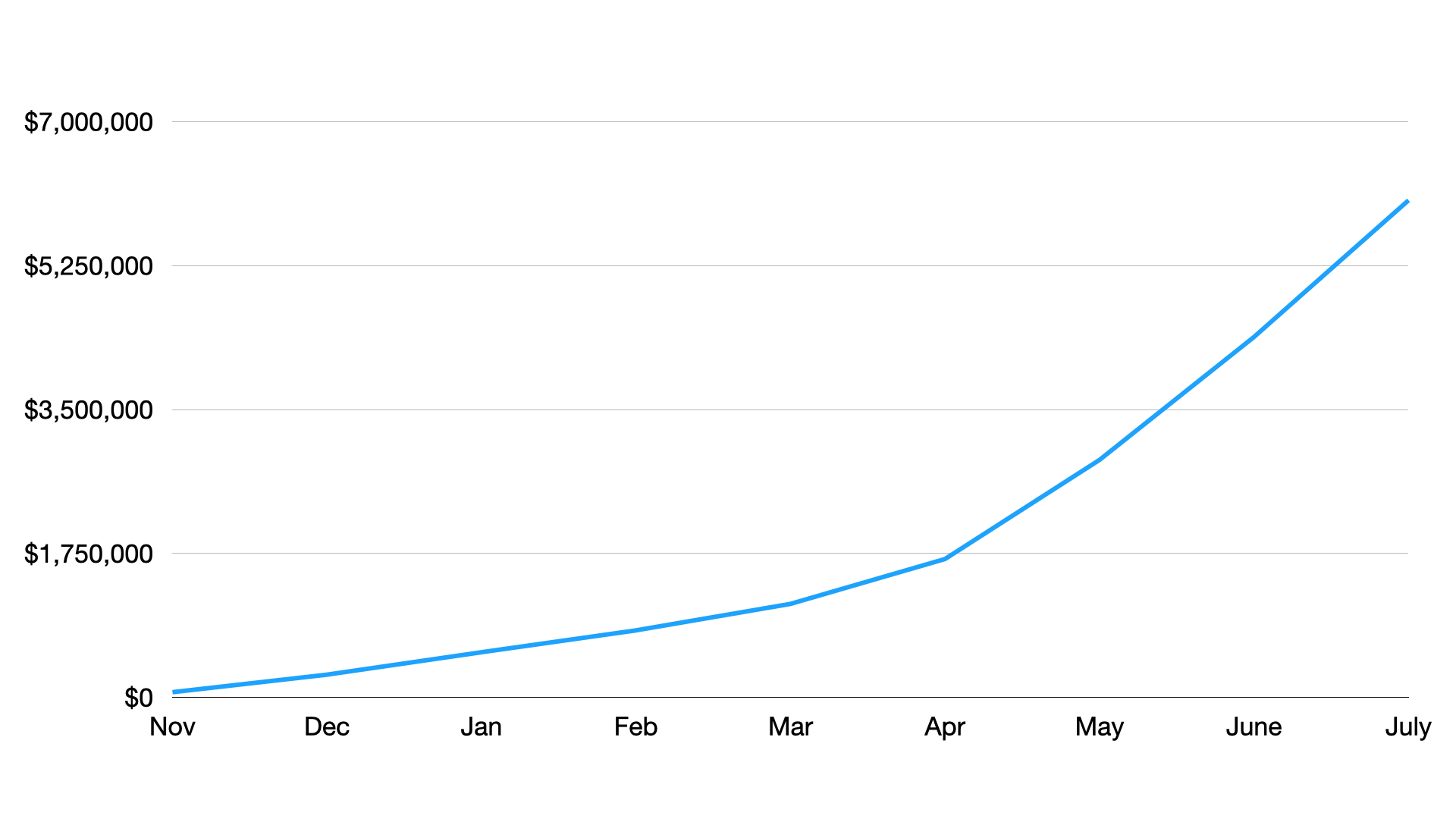To PRV holders:
It’s easy to get caught up in the day to day, but when we take stock at the end of every month, we’re continually excited to report – Incognito is growing, and people care about privacy. We’re proud to be part of this movement sweeping the globe.
View PRV Holder Presentation July 2020 >
Review development progress >
Get PRV >
July saw a few All Time Highs. More app users, more site visitors, more liquidity, more trading volume, and our favorite metric – the biggest increase in shielding volume so far.
Monthly shield volume: $4.6M (+112% monthly growth)
Whether it is to trade, invest, stake or simply hold crypto anonymously – users must take the first step to shield their assets. So, are people using Incognito?
$4.6M of crypto in 88 different currencies entered the Incognito ecosystem in July. Our total shield volume to date is $12.5M. Here’s how utility has grown since the mainnet launch in Nov 2019.

Incognito DEX liquidity: +$2.5M (+53% monthly growth)
This month, we devoted resources to fortifying the pDEX. Designed to solve some of the issues plaguing the original liquidity rewards program, the new pool product Provide channels funds towards pDEX liquidity and makes the ecosystem stronger.
We set a goal to introduce an additional $900,000 to liquidity pools. Sitting here at the end of July, we’re happy to report that pDEX is now $2.5M more liquid, for a total of $5.4M.

With pKyber, our combined liquidity is now $12.9M, and with pUniswap coming up soon, this is just the beginning.
Here are some other significant developments.
July highlights
In July, we focused on the bones of the project. More network resilience, improved app and node performance, and increased adaptability for multiple eventualities.
More network resilience
We began implementation of dynamic committee size and dynamic sharding. The chain will soon be able to better adapt to multiple different scenarios, such as unavailable nodes, disconnection, inadequate power, and varying numbers of nodes over time. Node operators will soon be able to unstake at any time without compromising the security of the network, and this lays the groundwork for eventually dissolving the fixed committee setup.
Read about dynamic committee size and sharding >
Improved app performance
Safeguards were installed to ensure security and stability, starting with a monitoring and alert system for all API/status requests. We are now focusing on fullnode performance and back-end API (Shield/ Unshield processes). We also tidied up the interface, released some new features, and improved loading and caching.
Continued node optimization
The speed of data insertion has now caught up with the speed of data synchronization, and for Node operators, this means greatly improved initial sync times. Times were reduced by 87% for beacon, and 79% for each shard.
Read about improved node performance >
Community creativity and activity
Community development didn’t slow down either. In July, we saw great updates to existing products, and welcomed a few new builds and builders to the party.
@raz has begun work on a very sleek web wallet designed especially for investors, in addition to his helpful community website and Node watcher.
@inccry continued to build out the beloved network explorer, including a PRV price evolution chart, as well as an advanced view for the real privacy geeks among us.
@josh_hamon’s friendly telegram bot Nito keeps you updated on what your Node is up to, and is currently helping out over 10% of all Incognito validators.
@bruno’s Incognito calculator is a beautiful web app for validators. It gives an overview of your staking activity, your earnings, the real-time PRV price, and other useful information.
@incsmile’s ambitious pApp platform is designed to enable developers to build their own privacy applications upon base functions defined in the pEthereum spec.
@taind has just released a clever MVP of his web wallet, with send and receive functionality. In August, we’ll be seeing a trade feature and more interface improvements.
August development
More utility, more stability, more privacy, more security! In addition to the proposals listed below, the core dev team will also be working on internal tools to automate processes and reduce the likelihood of human error.
Generate strong utility
Double the number of shielding transactions
Release cross-pool trading
Build a strong layer-2 core
Expanded features and improved app performance
Improved bug resolution and response time
Build a strong layer-1 core
Faster database preload
Internal code audit
Deploy privacy v.2 to testnet
Complete new staking flow
QA for Privacy v.2 and new staking flow
R&D
New smart contract interaction flow
Portal v.3
Add finality into RPC system
PRV Holders Monthly Call
It’s here again! Did you make it to the last one?
When: Friday, 7 August @ 2am UTC
Where: https://us02web.zoom.us/j/85472791529
Who: You - PRV Holders!
We’ll be chatting all things Incognito – what’s new, what’s next, and what’s on your mind. Post your questions in advance here.
Speak then, and see you around at we.incognito.org.
The Incognito Core Team



